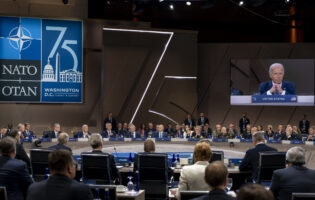The 5 Percent Hurdle: Outdated or Necessary?
The results of the German election on September 22, 2013 showed the highest number of wasted votes since 1949, despite a total increase in voter participation from the previous election. With the euro-critical Alternative for Germany (AfD) and the liberal Free Democratic Party (FDP) missing the 5 percent threshold to enter the Bundestag by a very small margin, almost 7 million votes, a combined 16 percent of all votes will not be represented in the parliament. This prompted reactions from many experts and politicians. The head of the AfD, Bernd Lucke, among others, called for a restructuring of this law to allow parties that are below the 5 percent hurdle to take seats in parliament and have the right to take part in committee work.
This threshold policy was initially introduced to control for fractured party politics, which after the Weimar Republic provided the platform for the Nazi dictatorship. With this law, the main political parties wanted to ensure that smaller parties would not be able to gain momentum and attempted to avoid similar incidences. However, the probability of run-away right-wing extremism recurring is low, and Germany has repeatedly proven to be politically stable. Thus, experts have argued that the measure is outdated and needs to be adjusted.
The main proposal that been discussed as an alternative to the current 5 percent hurdle is lowering the share of votes a party needs to receive to enter the Bundestag. Some suggest 4 percent, but others are demanding a more radical decrease to 1 percent. The election results underlined opposing voices, as twenty of the thirty parties that are not in parliament received less than 1 percent of the votes. Theoretically, this would have led to including a total of fifteen parties in the parliament, and with a 2 percent threshold, only the Pirate Party, AfD, and FDP would have been added to the existing parties in the Bundestag.
However, considering the tragic and immeasurable consequences of the fractured party politics of the post-Weimar era, all changes need to be made with great caution, calculation, and historical understanding. Additionally, lowering the hurdle must be made incrementally and should not be a jump from 5 to 1 percent. The consequences of such a sudden decrease are hard to predict, and a step-by-step reduction prevents drastic political changes. Finally, keeping in mind the still historically recent events of Nazi dictatorship and significant reconciliatory efforts since then, Germans may not welcome the international reception, and thus, a decrease of about 1 percent―to a total threshold of 4 percent ―might be a good compromise to ensure that the policy is not outdated, but also considers past events.









